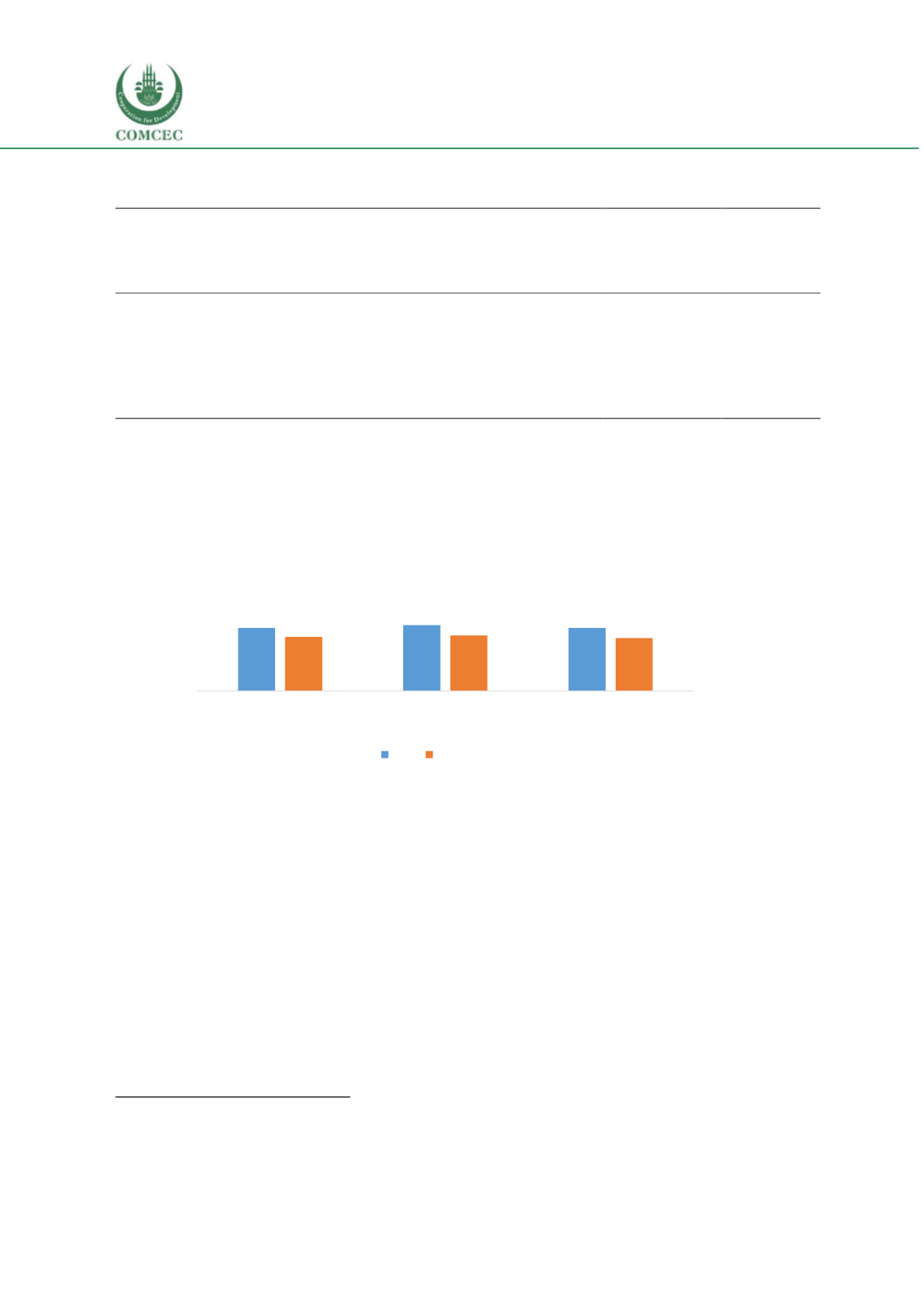

Education of Disadvantaged Children in OIC:
The Key to Escape from Poverty
168
Rural gender disparities:
The gender disparities in access to schooling are reflected also in
learning achievements. Both in the literary and numeracy categories, girls perform worse than
boys.
Figure 62 Rural learning levels by Gender
Source: ASER 2015 - Rural
Poverty/Wealth:
Poverty was shown in the previous section to be one of the strongest
determinants of low access to school and a contributor to inequalities in access, especially in older
children. In terms of learning outcomes, poverty remains a strong influencer as indicated in ASER-
Pakistan (2015). In Pakistan, learning gaps between the richest and poorest wealth quintiles
widen as children get older.
Disability:
The ASER 2015 report tested the attainments of children living with a mild to severe
disability. As expected, disability constitutes an impediment to learning, with children reported
to have moderate to severe difficulties all clustered at the lowest level of the learning scale across
the different assessment types (Reading, Arithmetic and English)
426
.
426
ASER (2015)
49
51
49
42
43
41
0
20
40
60
80
100
Urdu/Sindhi/Pashto (% who
can read at least sentences)
English (% who can read at
least words)
Arithmetic (% who can at least
do a substraction)
% of children aged 6-15
Boys Girls
Table 29 ASER 2015 – Urban learning levels Class 5 by province/administrative unit
Class 5
% who can read story
(Urdu/Sindhi/Pashto)
% who can
read sentence
(English)
% who can
do division
Balochistan-Urban
70.7
70.7
44.8
Islamabad-Urban
93.9
100
98.5
Khyber Pakhtunkhwa-Urban
39.3
40.1
35.5
Punjab-Urban
56.2
57.7
52.6
Sindh-Urban
62.5
64.3
55.7
National-Urban
57.8
59.5
52.4
Source: ASER 2015 - Urban
















